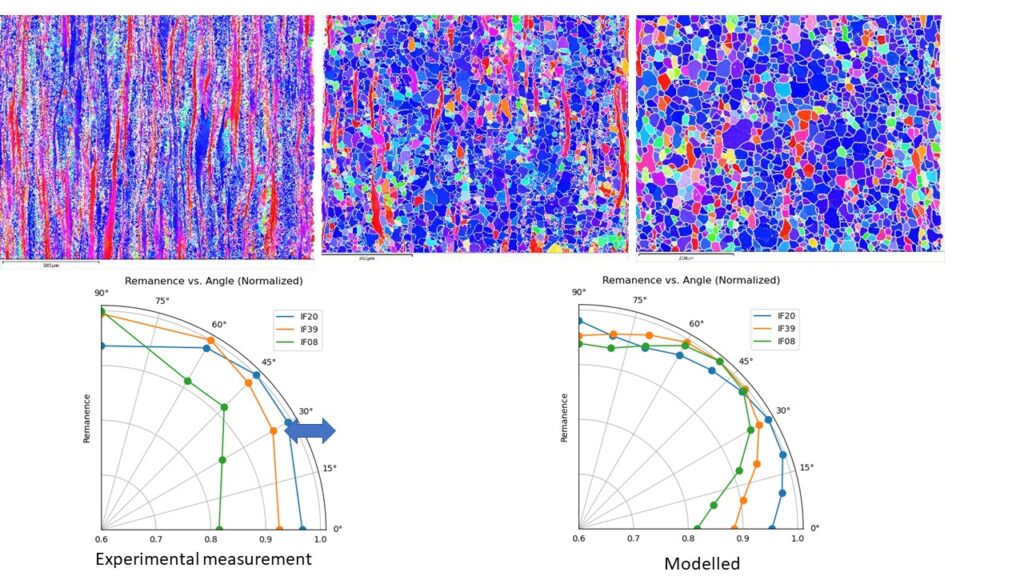Completed: Atomistic scale simulation of the magnetic anistropy in steels
In collaboration with British Steel, Tata Steel and the University of York
Steel is an irreplaceable and highly recyclable material that serves as a cornerstone for foundation industries worldwide. Monitoring the steel production process closely is crucial to ensure sustainable development, growth, and modernisation. The microstructural parameters of steel must be controlled with great care to maintain its unique properties. Electromagnetic (EM) sensors present a tremendous opportunity to monitor and control these microstructures in real time. By optimising processes and energy consumption, increasing the recovery rate of downgraded products, and expanding the range of applications addressed by a single compositional grade, the deployment of real-time microstructure measurements can significantly enhance the sustainability of the steel industry.
One area of particular interest in steel microstructural parameters is grain orientation, which determines a material’s resistance to deformation in a specific direction, known as the r-value. Researchers have developed a fundamental modelling capacity to correlate texture with magnetic properties, producing crucial data on magnetic parameters for crystallographic anisotropy in steels. This data will enable the use of EM sensors for online texture characterisation in steel production facilities and further optimize the process.

The measurement of remanence with an angle to the rolling direction in the rolling plane has been identified as the optimum experimental method to measure the texture in steels. This led to future modelling and EM sensor measurement research work, followed up after the project period.
Publications
- Non-destructive evaluation of magnetic anisotropy associated with crystallographic texture of interstitial free steels. https://doi.org/10.1016/j.jmmm.2023.170374
- Electromagnetic sensors for in-situ dynamic microstructure monitoring of recovery and recrystallisation in interstitial free steels https://doi.org/10.1016/j.jmmm.2022.16918
- In-situ dynamic monitoring of phase transformation in steels using a multi-frequency electromagnetic sensor https://doi.org/10.1016/j.ndteint.2023.102918

Dr. Lei Zhou
University of Warwick
Published: September 23rd, 2022
Posted in
projects





